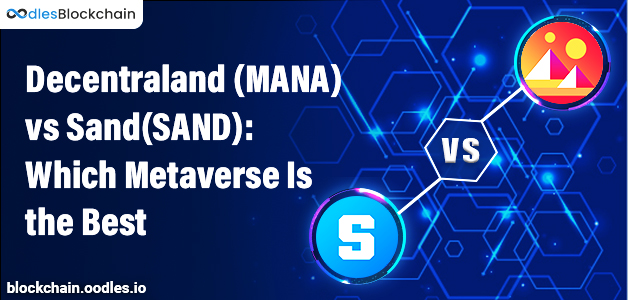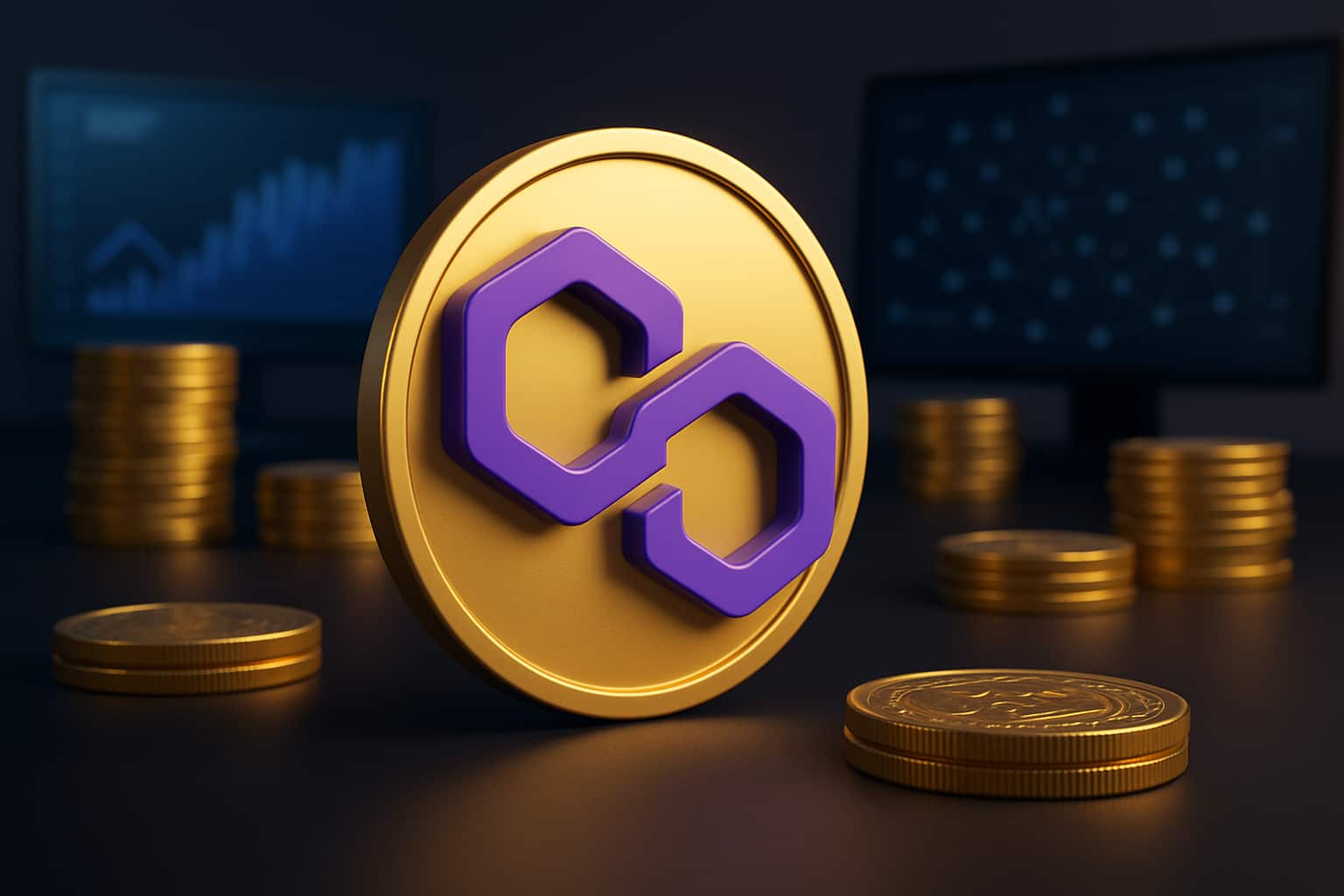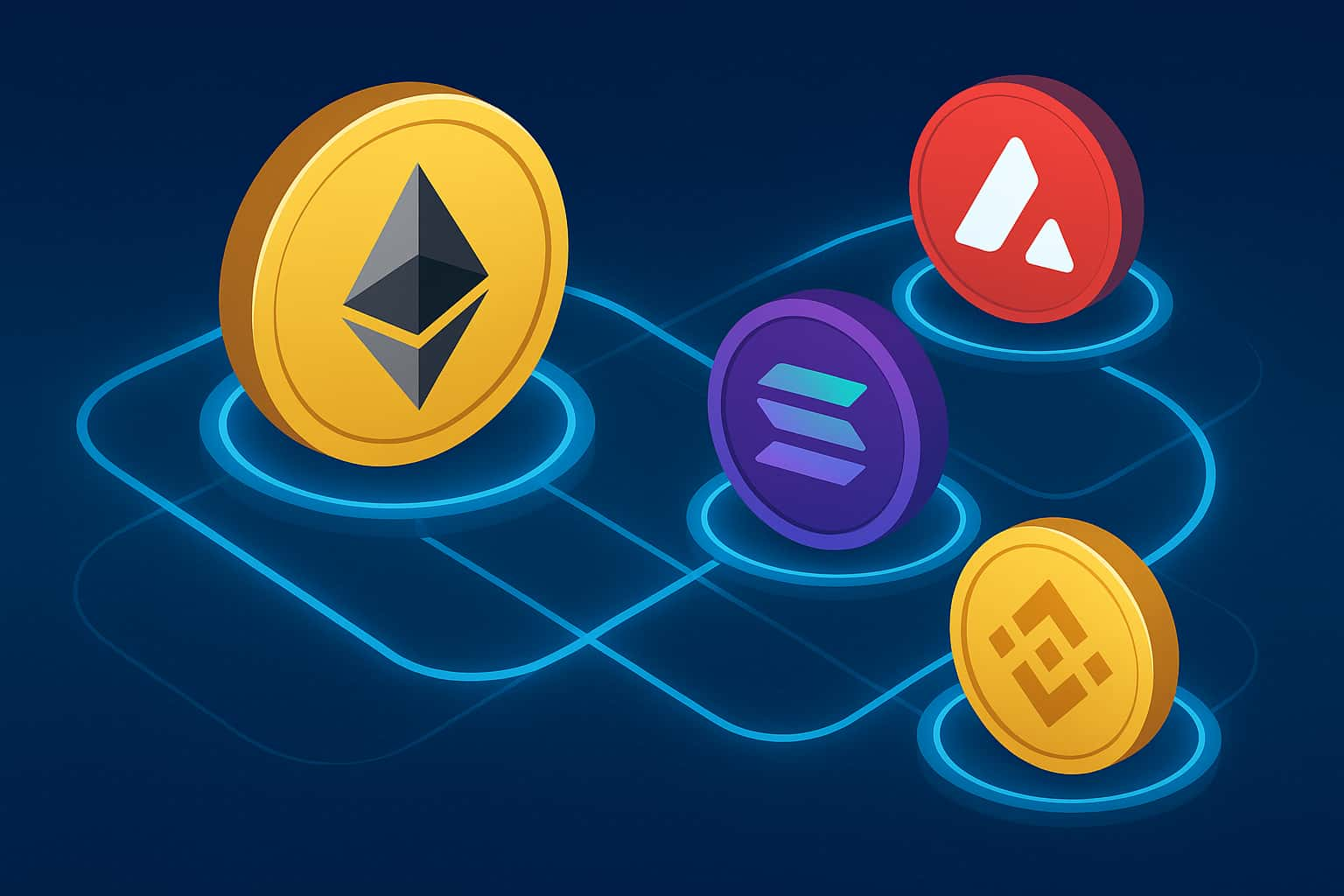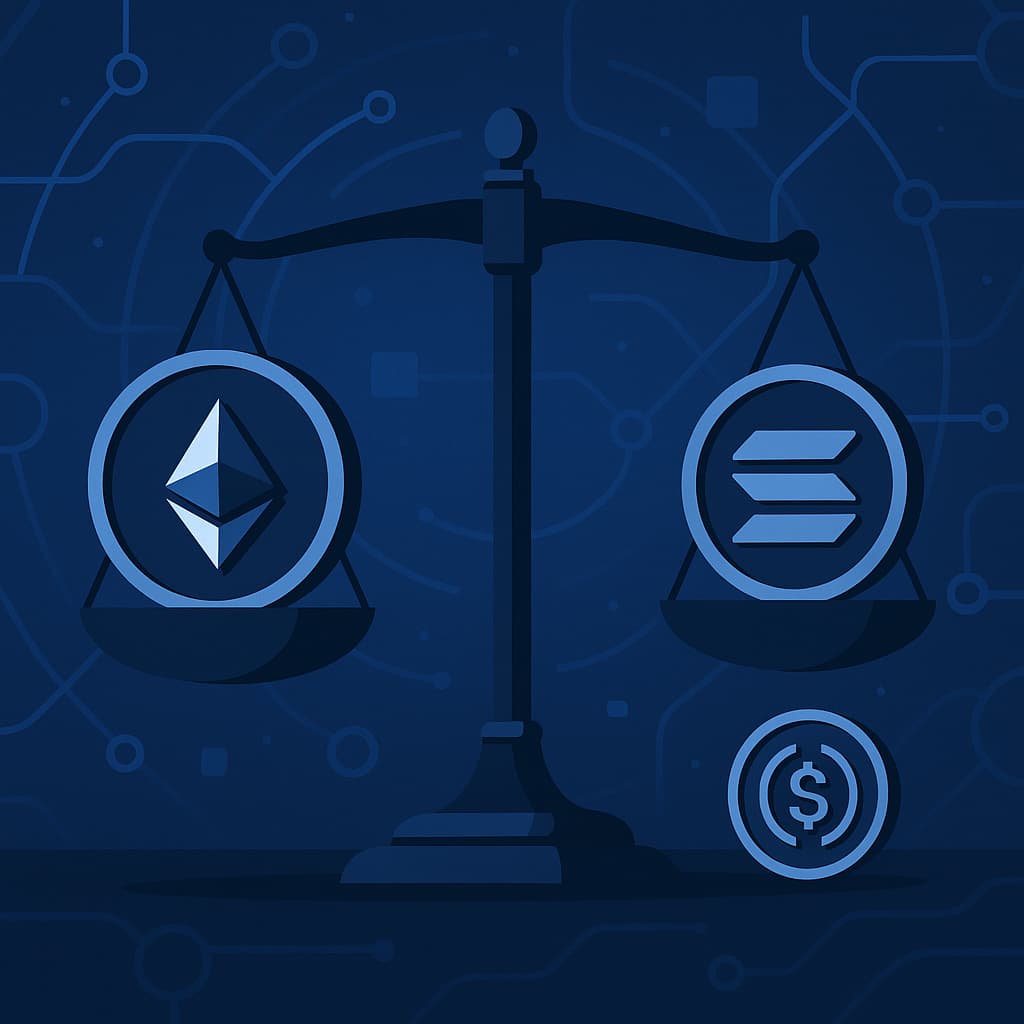-
Decentraland and Sandbox are the most common terms in the metaverse world. Even though they both are powered by blockchain development services, they are quite different from each other. In this article, we will dive into their key differences and which is better:
What is Decentraland (MANA)
Decentaland (MANA) is an Ethereum-based three-dimensional (3D) world or metaverse. It lets users create and monetize various virtual applications and content. Essentially, a decentralized autonomous organization (DAO) governs this virtual world. Therefore, it allows users to control and create their projects on the platform. Developers created this platform in 2017 with a $24 million initial coin offering (ICO). They made it available to the public in 2020 after the launch of the beta version of this platform. Decentraland has assets called MANA and LAND. Here, MANA is the cryptocurrency of this platform. It is an ERC-20 token that is fungible in nature. Users can utilize it to purchase goods and land in this world. Additionally, they can pay for various avatars, names, wearables, and other products available on the Decentraland (MANA) marketplace using MANA. Decentraland has a finite amount of digital space or areas where users interact. These spaces are called LAND. Fundamentally, these are ERC-721 non-fungible assets.
What is Sandbox (SAND)
Pixowl launched Sandbox in 2011. It is an Ethereum-based gaming metaverse. Besides gaming, it lets users create, sell, and buy digital assets or virtual reality non-fungible tokens (NFTs). Platform users can take part in the governance by voting via DAO. Sandbox uses three integrated products for User Generated Content (UGC) production - VoxEdit, Marketplace, and Game Maker. VoxEdit enables users to create voxel models (3D pixels). Users can buy or sell these voxel models in the Marketplace. Moreover, Game Maker helps in creating a virtual game for free. It does not require creators to have any coding knowledge to get started with this product. The native currency of the Sandbox is the SAND token. It uses the ERC-20 standard for transactions within its metaverse. Similar to the Decentraland, this digital world also has LAND tokens. They are virtual real estate in the Sandbox. Another type of token existing in this world is an ASSET token. It represents a virtual asset in the SANDBOX. A user can create it using VoxEdit and place it in the Marketplace for trading.
How Decentraland and Sandbox Work
These metaverses have a similar concept. Users can enter a virtual world and interact with other players and objects. The Decentraland and Sandbox metaverse permit users to buy virtual land in their marketplaces. People can create their assets in these three-dimensional worlds. They can sell these assets in the respective marketplaces. However, users need to buy a piece of land first to generate money. Developers have built both these platforms on the Ethereum blockchain. It is another analogy between Decentraland and Sandbox.
What are the Differences Between Decentraland and Sandbox
Decentraland and Sandbox show a variety of similarities in their functioning. However, these platforms also have some differences. One of the first differences between these metaverse platforms is the total amount of land. Decentraland has 90,601 land plots and offers parcels, estates, districts, and plazas. On the other hand, Sandbox has 166,464 land plots and only offers estates and districts. Another main difference between these two metaverse platforms is wallet compatibility. Users can utilize any form of ERC-20 wallet in the marketplaces of both projects. Decentraland uses Walletconnect for the participation of Polygon users. On the other hand, Sandbox only allows the participation of ERC-20 wallet users. These platforms also have differences in land purchase. Decentraland permits users to buy land only from its marketplace. Sandbox offers more choices when it comes to buying land. Apart from the Sandbox marketplace, the platform's users can also purchase land from OpenSea.
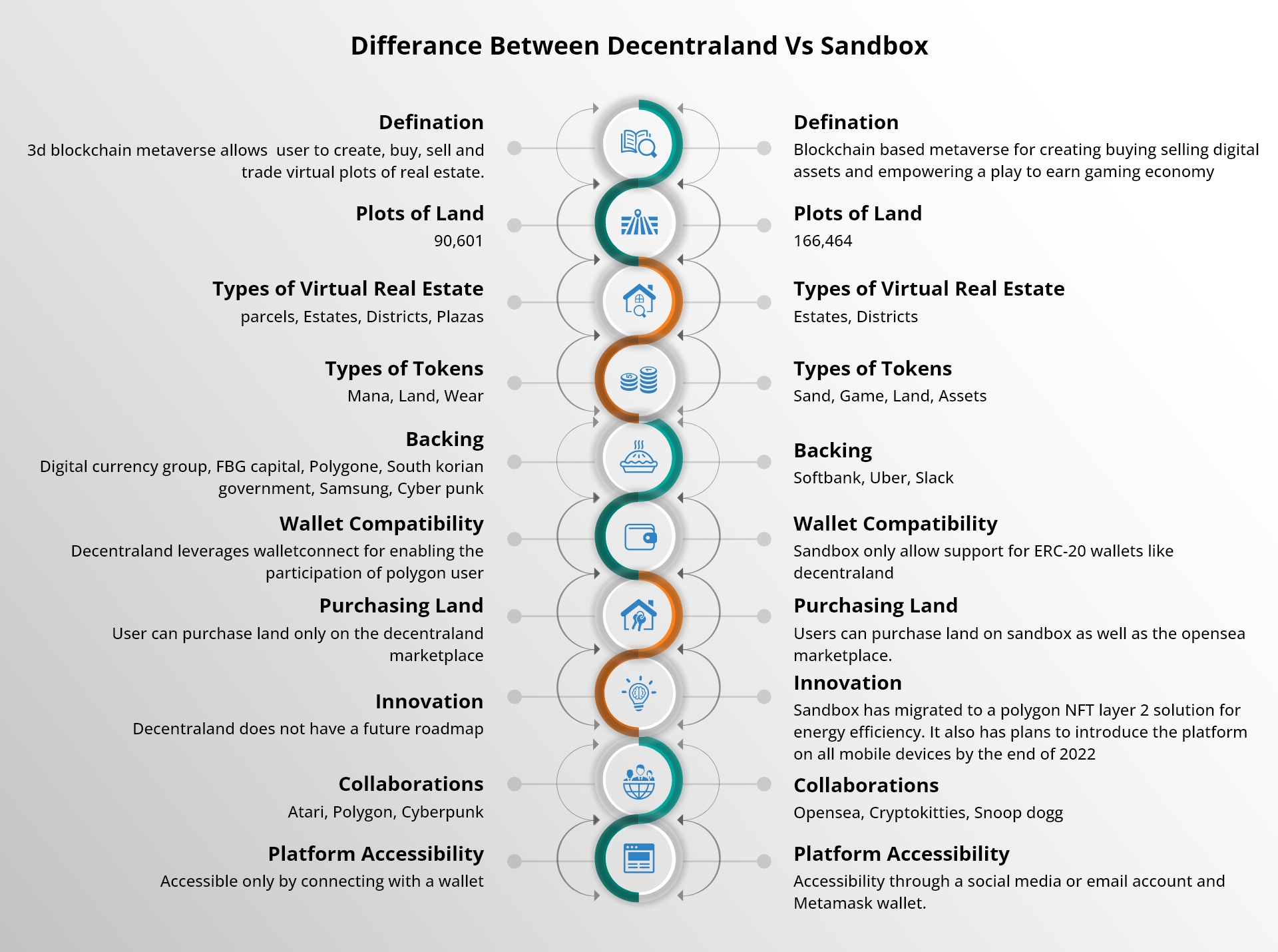 Sandbox stands as a clear winner in respect of platform access. Sandbox is accessible via email accounts, social media, and Metamask wallet. So, it gives multiple options to users for platform accessibility. But, Decentraland permits access through a wallet only. When it comes to plans, Decentraland does not follow a definite roadmap. But, Sandbox has a clear vision and focus for its future growth. The platform has switched to Polygon NFT layer-2 solutions. This feature makes the platform energy efficient. Sandbox creators are also planning to launch the platform on all mobile devices. You may also want to read : Building An Advanced NFT (Non-Fungible Tokens) Marketplace
Sandbox stands as a clear winner in respect of platform access. Sandbox is accessible via email accounts, social media, and Metamask wallet. So, it gives multiple options to users for platform accessibility. But, Decentraland permits access through a wallet only. When it comes to plans, Decentraland does not follow a definite roadmap. But, Sandbox has a clear vision and focus for its future growth. The platform has switched to Polygon NFT layer-2 solutions. This feature makes the platform energy efficient. Sandbox creators are also planning to launch the platform on all mobile devices. You may also want to read : Building An Advanced NFT (Non-Fungible Tokens) MarketplaceWhich Metaverse is the Best
Presently, it is hard to say which decentralized metaverse is better. Sandbox is in Alpha mode and offers better graphics. Additionally, it runs smoother than Decentraland. On the other hand, Decntraland is a battle-tested platform. Moreover, Sandbox is much more centralized than Decentraland. Presently, it is hard to say which one will win in the long race. However, when you look at the market trends, it seems to favor Sandbox over Decentraland. Also, Read: NFT Marketplace Development | Emerging Business Opportunities
Conclusion
As of now, you can see how tough it is to find out which decentralized metaverse is a better alternative. Both of them are leading projects in the metaverse. They share similarities and differences. The similarities make both these platforms good investment platforms. So, you can start your metaverse journey with any of the two. If you are interested in creating a metaverse platform like Decentraland or Sandbox, then Oodles Blockchain is your ideal partner. Contact us today for more information.

Our Offices
INDIA
Emaar Digital Greens, Sector 61,
Gurugram, Haryana
122011.
Welldone Tech Park,
Sector 48, Sohna road,
Gurugram, Haryana
122018.
